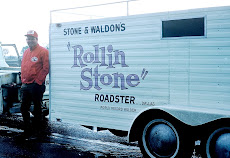This is my latest model plane...It is a
Fokker DV-II... Unlike the DR-I, flown by
Manfred von Richthofen, this plane had two
wings (bi-plane) compared to the three wings
(tri-plane) of the Red Baron. The DV-II entered
service in 1917 and was immediately superior
to anything the allies had. The Fokker DV-II
had a wingspan of 29 feet and three inches,
was 22 feet and nine inches in length, and
powered by a 175 horsepower Mercedes in-line
engine. At this period of time the Spads and
Sopwith Camel aircraft of the allies had a flying
ceiling of 15,000 feet. The Fokker DV-II could
climb to 19,000 feet and dive down on opposing
aircraft. It was designed by Reinhold Platz and the
plane was such a success that manufacturing
plants in Holland and Hungry were re-tooled to
build Germany's newest and best plane. At war's
end almost 16,000 of the planes had been built.
Best of all, it was equipped with twin 7.92 Spandau
machine guns that were synchronized to fire through
the propeller, another first in technology. To this point
the machine guns had been mounted on the top wing
and fired down on opponents. The new positioning on
the fuselage allowed the pilot to see right down the
barrels of his guns.
This particular model has been painted in the
colors of German ace Ernst Udet, the second
highest scoring flyer of World War I. His 62
victories was only topped by his squadron
commander, Richthofen. Udet took over command
of the 'Flying Circus' squadron when Richthofen was killed and survived the war. Udet was consulted for
his aerial expertise throughout the 1920's and 1930's
but continuing battles with Herman Goring, commander of the Luftwaffe, and the Nazi Party in general, led him to commit suicide in 1941. He is
still regarded as a national hero in Germany.
Tuesday, September 20, 2011
Subscribe to:
Post Comments (Atom)






No comments:
Post a Comment